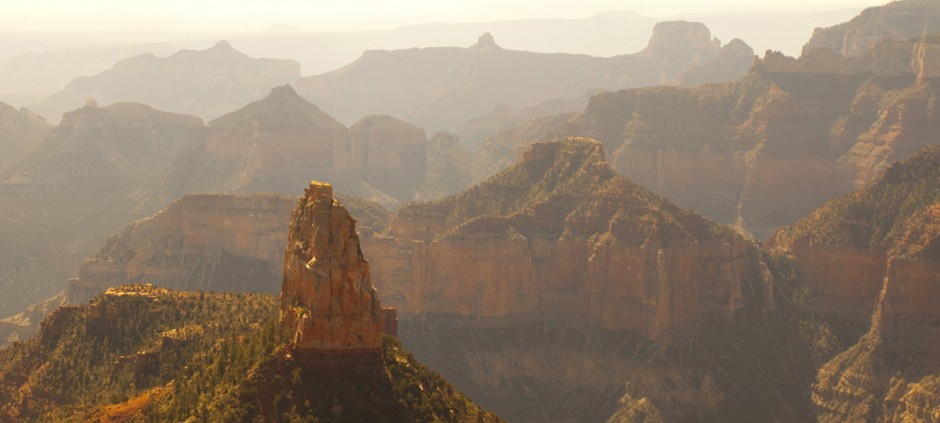
5 Tips on Improving your Landscape Photography
Whether you’re a budding photographer, have a photo trip planned, or are just falling a bit too much “into the routine” of photographing landscapes, the following tried and true tips are sure to help you capture some stunning shots on your next adventure.
1) Less can be more
The first thing that comes to mind when thinking landscape photography is “big”, “wide”, and “expansive” views. Well, I guess these are three things. But the point is that most folks don’t initially think of narrowing down their big landscape before taking the photo. But they should, at least for certain shots. Here’s a great example below, of the Grand Canyon.
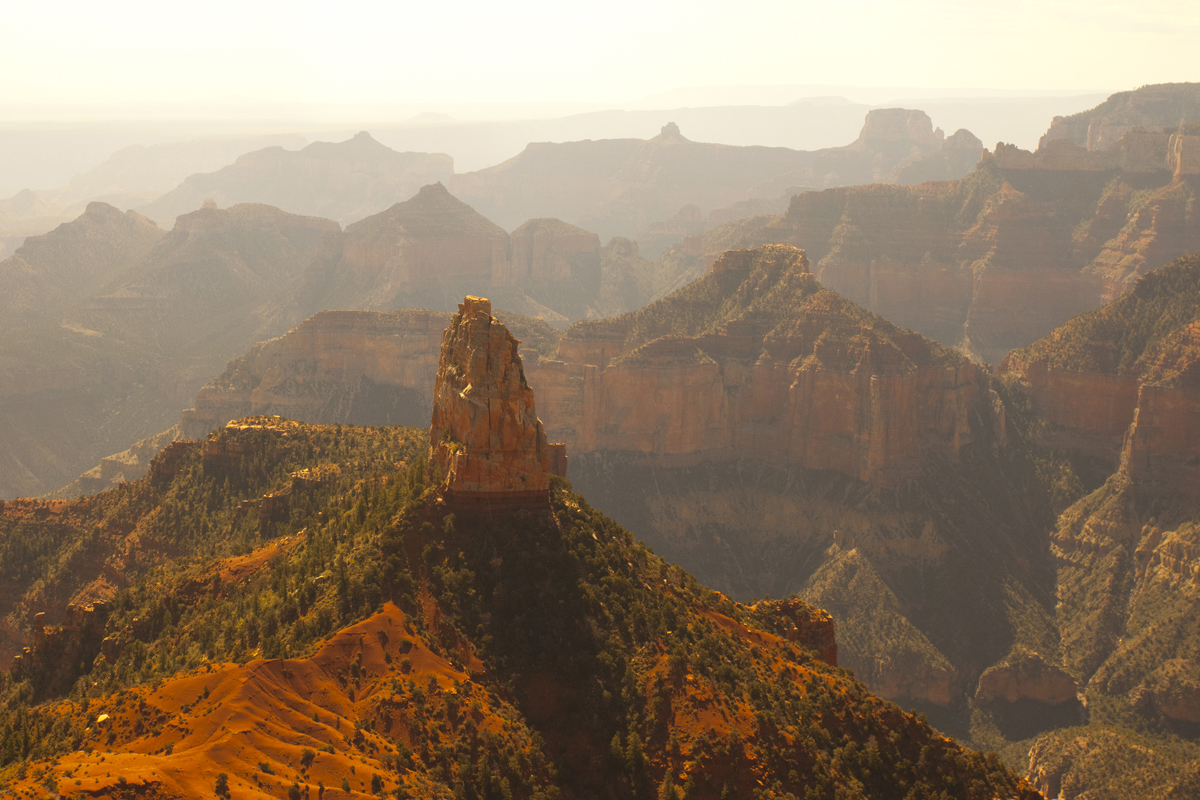
The Grand Canyon is obviously massive. The challenge for photographers is how to document this massiveness. Well, it’s not as obvious as you’d think. Instead of capturing the entire scene, look for narrowing your shot down a bit. Focus on a prominent element in the landscape and use other creative techniques for showing the size, such as depth, haze, and texture, as in the above photo. This applies to just about any big landscape that you’ll come across, whether it be tropical jungles in the Amazon, ancient temples in Machu Picchu, or tropical islands in the Galapagos.
2) Get people in your shots
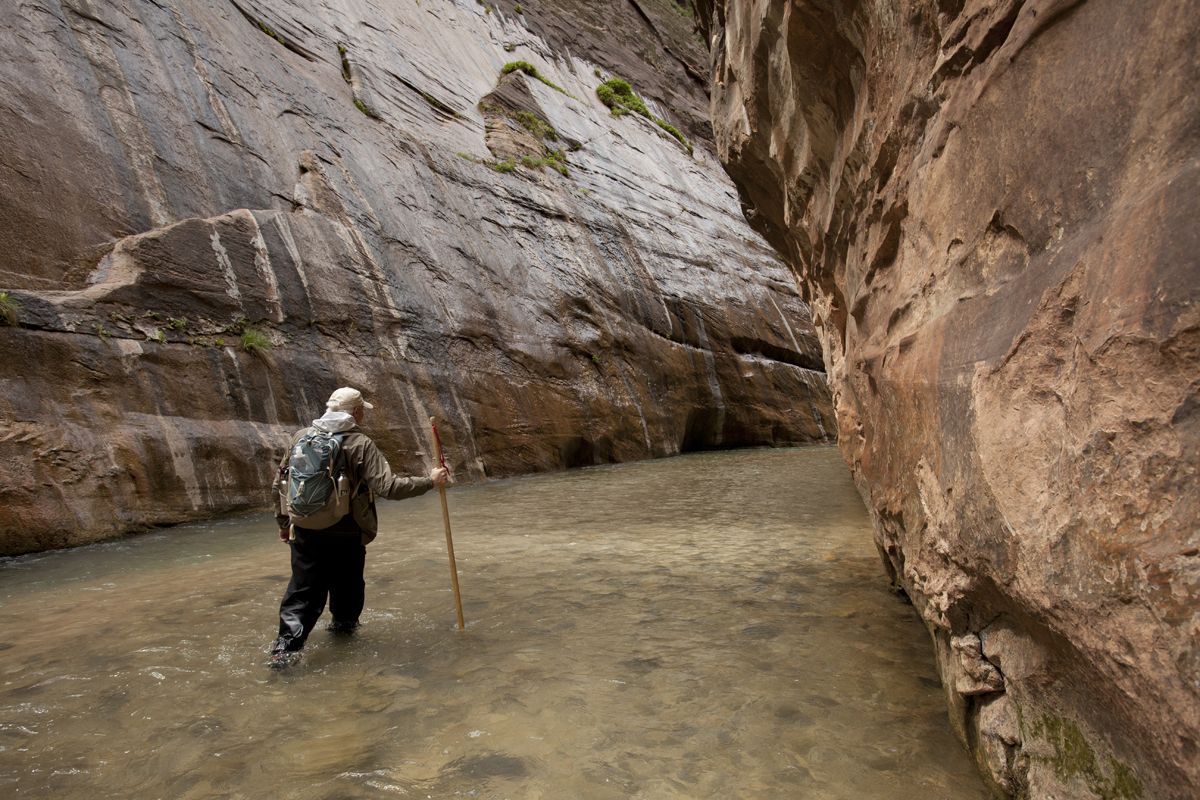
The last thing you’d think of when photographing a beautiful landscape is getting someone in your shot. However, don’t underestimate the power of the human element in your photography. Humans do a lot of good, especially in beautiful landscapes that your viewers want to be in themselves! People give your photo scale, context, and give a reason for the viewer of your photograph to “put themselves in the scene”, which often causes them to like the shot more.
3) Don’t be afraid of harsh shadows
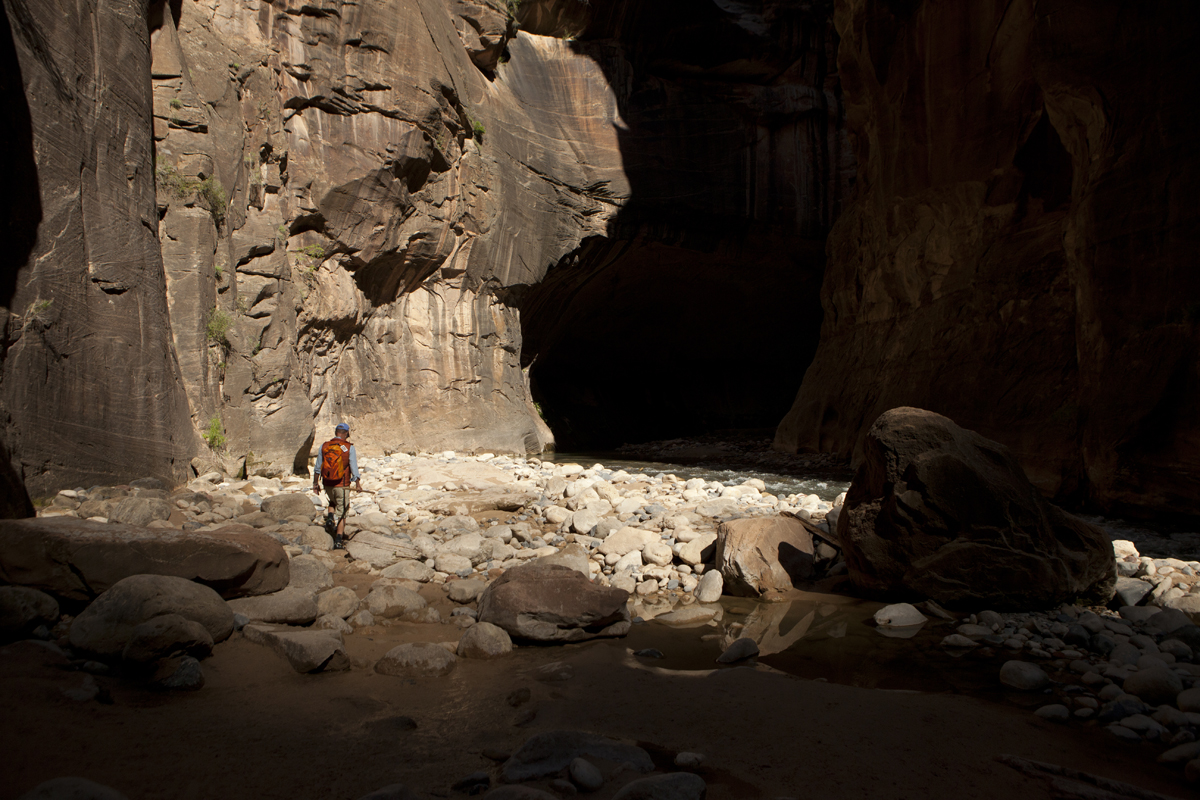
We’re always after nice soft lighting and transitional zones in our photos to avoid shadows. Generally, harsh shadows make photographs seem a bit chaotic and unappealing to the eye. However, with big landscapes this isn’t always the case. In fact, the sense of the unknown, the mystery, and the apprehension provided by shadows can be an alluring focal point of your photography if done correctly. When experimenting with this technique, think: mystery, adventure, and intrigue when composing your photo. The above photo in Zion National Park does just that, as the hiker ventures “in the abyss”.
4) Look for silhouettes
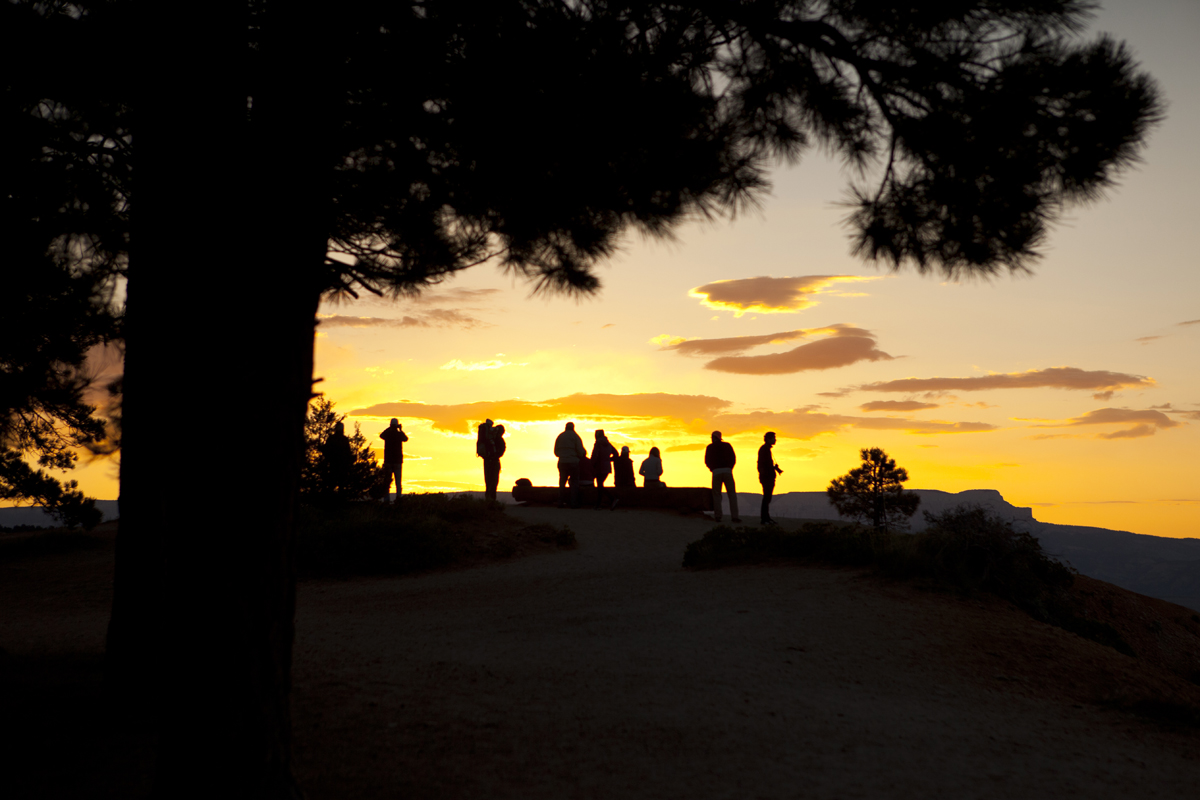
The trick with silhouetted photos is that they may not always be obvious. Our eyes can adjust for light and see brightness where very little actually exists. Thus, you have to begin to train your eyes to see where your camera will see a silhouette. Take the above photo as an example. By knowing that the intense light behind the group of hikers was enough to create a silhouette, I was able to capture a very evocative scene at the rim of Bryce Canyon National Park. If this is still a bit new to you, take some time to read our Exposure and Light section to learn how to meter your camera for the right light.
5) Look for patterns
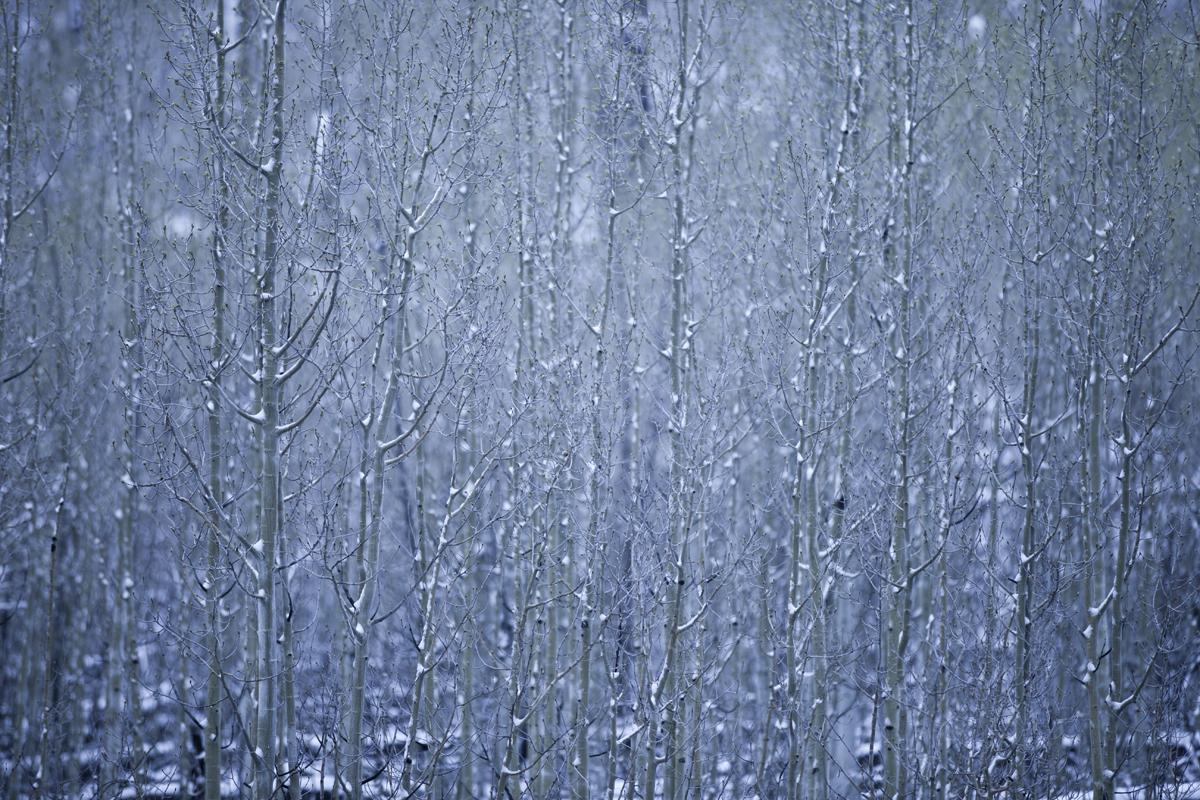
Sometimes you won’t get the scene you want or are expecting when photographing in the field. For instance, a snowstorm may blow through and obscure any view you might have had. Well, it’s time to make lemonade, and with the right plan, you can make the most of your environment. Above is a great example. These small young aspens were just about the only thing you could see in this blizzard. So, by looking for repeating patterns you can create a bit of an impressionist work of art. Color, texture, and composition become paramount. But, if you get it right, it can be a great photo. Just think of all the computer and smartphone backgrounds that are pretty much nothing besides patterns in nature? (eg, water ripples, pebbles, leaves, etc.). They can make stellar photos.
Think beyond and capture life,
Leave a reply